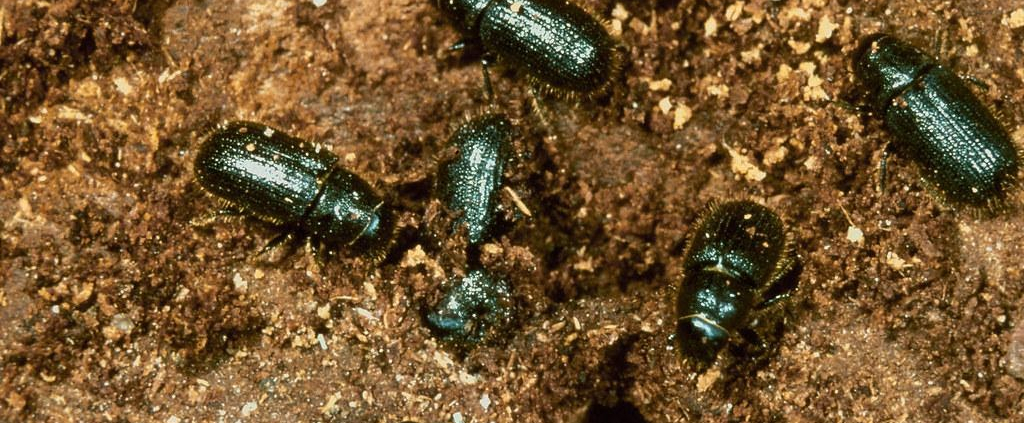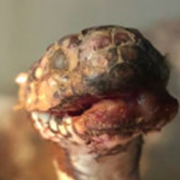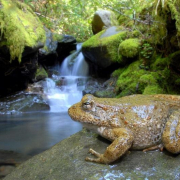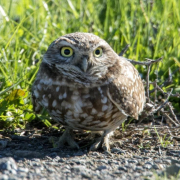California Bark Beetles, Wildfire, and the Intersectionality of Art and Science
Bark beetles are a highly diverse subfamily of weevils that spend most of their life histories within specific host plants. Native bark beetles typically play key roles in the structure of natural plant communities and large-scale biomes. In most cases, bark beetles infest their host plant to shelter from predation, feed and reproduce. In the event of a successful invasion, these beetles nearly always kill their host tree regardless of attempted human intervention (USDA, 2015).
During periods of balanced populations, trees killed by bark beetles provide essential habitat for a myriad of other organisms; however, as climate change results in warming and increased drought in certain regions, bark beetle populations have exploded in magnitude leading to the largest-scale tree mortality ever recorded from an insect infestation on multiple wooded continents (Mikkelson et al., 2013).
In the period between 2010 and 2017, an estimated 129 million trees succumbed to bark beetle infestation in California alone (Alexander, 2017). These dead trees become prime fuel for fire; in 2017 alone, 1.2 million acres of land burned in California wildfires.
Bark beetles are cylindrical in shape with short legs, antennae, and stout mandibles for chewing through fibrous tree material. In California, the prominent native species are the mountain pine beetle, the fir engraver beetle, the western pine beetle, the Jeffrey pine beetle, and the pine engraver beetle. Although these beetles are indeed native, their life cycle activities can cause high levels of tree mortality state-wide (USDA, 2015).
Once a juvenile bark beetle finds a suitable new host, typically a specific species of tree, it finds an entry point and chews its way in. It is at this moment that a battle begins between the tree and the beetle. To combat the invaders, coniferous resinous trees produce a cocktail of chemical defenses called resin. The resin serves as a physical barrier, quite literally pushing the beetle out of the open wound. At times, the resin can even entomb and kill the beetles.

So, with these natural defenses built into our trees, why are bark beetles wreaking havoc on California forests? There is the rub: bark beetles face very little resistance when attacking a previously stressed tree. Tree stress can be caused by construction, paving, excavating, wind, lightning, and most importantly: drought. Climate change has led to an increase in the severity of droughts in dry areas worldwide (Raffa, 2015).
In California, the period between 2011 and 2015 marks the driest since record-keeping began in 1895 (Hanak, 2016). During extreme drought conditions, water-stressed coniferous resinous trees often fail to produce enough resin to successfully fight off invading beetles (Roth, 2015). Without the critical chemical defenses to slow them down, bark beetles can easily decimate vast numbers of drought-stressed trees.
Beetles are also able to expand their range to higher latitudes and elevations with rising global average temperatures, infiltrating forests that have not evolved natural defenses (Mikkelson, 2013). Interestingly, in early 2020, a joint study conducted by the National Park Service and the U.S. Geological Survey showed that bark beetle infestation was partially responsible for the deaths of more than two dozen giant sequoia trees in Sequoia and Kings Canyon national parks.
These trees are known to live up to 3,000 years and usually only die when they become too big to support their own weight. The study into why these iconic trees are just now succumbing to bark beetle infestations for the first time is ongoing, however, drought stress and rising temperatures are the leading suspects.
Perhaps all is not lost to the beetles, however. One innovative UCSC music professor has developed an unlikely potential solution to combat our bark beetle problem. For well over a decade, Professor David Dunn has created music using the sounds of nature, specifically recordings of bark beetles chewing on California’s trees. He now holds a patent for a unique device that uses sound (which he refers to as his “chaotic oscillators”) as a targeted sonic weapon to disrupt the feeding, communication, reproduction, and various other essential behaviors of bark beetles when it is played into an invested tree.
Professor Dunn combined the sounds of beetles with randomly generated electronic sounds which confuse the beetles and halt their basic functions. When played long enough, the beetles are rendered sterile and can even become cannibalistic, eventually wiping out the entire population inhabiting the treated tree. The beetles are not able to get used to and adjust to the sounds, as the chaotic oscillators never repeat themselves, the randomly generated sounds are patternless. Professor Dunn states:
“We have now entered into a period of common interests between art and science largely driven by the commonality of digital tools.
Artists are now just as involved in designing such tools as the scientific community, and often create software and instrumentation in order to facilitate their creative visions that may ultimately be of even greater value to scientific research. I think that this was one of those instances and a couple of fortuitous events conspired to allow something interesting to happen.”
Professor Dunn is currently working with his research group to digitize his analog circuitry and research ways to effectively deploy the sonic tool into forests at a large scale.

References:
Alexander, Kurtis (2017). California Losing 2 Million Trees a Month as Drought-Related Plague Drags On. SF Gate. Retrieved from: http://www.sfgate.com/science/article/Drought-related-tree-die-off-continues-to-plague-12422751.php
Hanak, Ellen et al. (2016). California’s Latest Drought. Public Policy Institute of California. Retrieved from: http://www.ppic.org/publication/californias-latest-drought/
Mikkelson, Kristin et al. (2013). Bark Beetle Infestation Impacts on Nutrient Cycling, Water Quality and Interdependent Hydrological Effects. Biogeochemistry 115. Doi: 10.1007/s10533-013-9875-8
Raffa, Kenneth et al. (2015). Bark Beetles: Biology and Ecology of Native and Invasive Species. San Diego, CA. Academic Press Roth, Sammy. (2015).
Dying California Trees Raise Wildfire Risk. USA Today. Retrieved from: https://www.usatoday.com/story/news/2015/05/15/california-drought-trees-wildfire-bark-beetles/27400801/
United States Department of Agriculture. (2015). Bark Beetles in California Conifers: Are Your Trees Susceptible? (R5-PR-003). United States Government Publishing Office.







